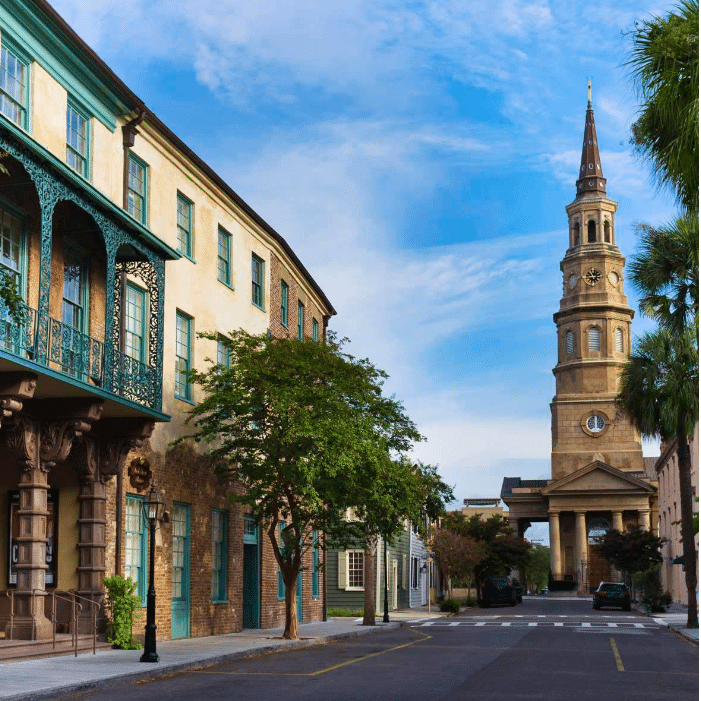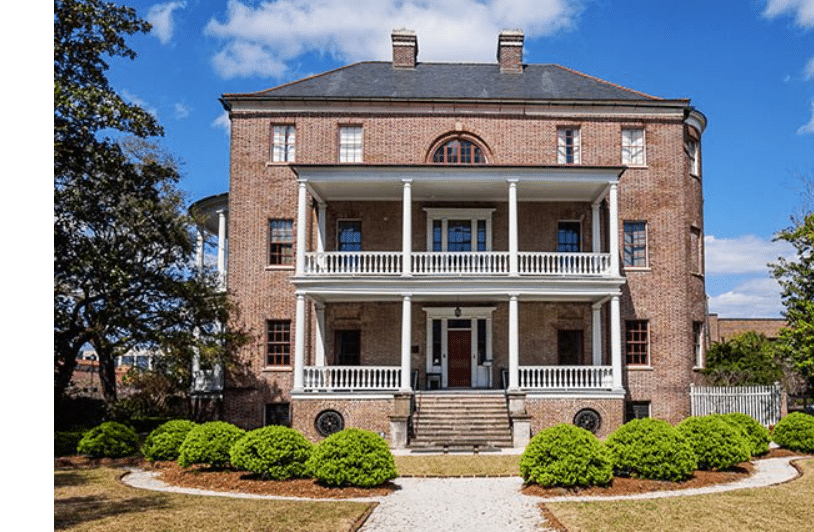Charleston South Carolina travel information by Christmasmarketusa.com
Charleston is a charming coastal city in South Carolina, known for its rich history, stunning architecture, and mouthwatering Low Country cuisine. Visitors can explore cobblestone streets, antebellum mansions, and picturesque gardens while soaking in the city’s famous Southern hospitality.

Table of Contents
Find the best accommodations and airfares
Check availability at 5* hotels, guest houses and apartments rated "superb" or "exceptional" by visitors just like you.
NO RESERVATION FEES
CHECK AVAILABILITY FOR YOUR DATES HERE
Where is Charleston?
Charleston is situated on the Atlantic coast of South Carolina, nestled between the Ashley and Cooper rivers.
How to get to Charleston
Nearest airport to Charleston
Charleston International Airport (CHS) is the primary gateway for visitors arriving by air. It’s located about 12 miles (19 kilometers) northwest of downtown Charleston and offers direct flights to many major U.S. cities.
Distances
- Charleston to Columbia: 120 miles (193 kilometers)
- Charleston to Atlanta: 300 miles (483 kilometers)
- Charleston to Charlotte: 210 miles (338 kilometers)
- Charleston to Savannah: 108 miles (174 kilometers)
For those arriving on long-haul flights, Charleston is approximately a 5-hour drive from Atlanta’s Hartsfield-Jackson International Airport.
Rail travel
Amtrak’s Silver Service/Palmetto line serves Charleston, with the station located at 4565 Gaynor Avenue, about 10 miles (16 kilometers) north of downtown. The train connects Charleston to major cities along the East Coast, including New York, Washington D.C., and Miami.
Driving to Charleston
Interstate 26 is the main highway leading into Charleston. If you’re driving from Columbia, take I-26 East directly into the city. From Atlanta or Charlotte, take I-85 to I-26 East. From Savannah, take I-95 North to I-26 East.

History of Charleston
Charleston’s history is as rich as its famous she-crab soup. Founded in 1670 as Charles Town (named after King Charles II of England), the city played a significant role in both the American Revolution and the Civil War.
Charleston’s historic downtown, with its well-preserved antebellum architecture, is a testament to the city’s long and sometimes tumultuous past. The city was also a major port for the Atlantic slave trade, a dark chapter in its history that’s now addressed in various museums and historic sites.
What’s Charleston known for?
- Antebellum architecture and historic homes
- Low Country cuisine, including shrimp and grits
- Beautiful beaches and coastal landscapes
- Rich colonial and Civil War history
- Thriving arts and culture scene
Top things to do in Charleston
- Explore the Historic Downtown
Wander through the charming streets of the historic district, admiring the colorful row houses and grand mansions. Don’t miss Rainbow Row, a series of 13 pastel-colored historic houses on East Bay Street. - Visit Fort Sumter National Monument
Take a ferry to Fort Sumter, where the first shots of the Civil War were fired. The fort offers a fascinating glimpse into American history. - Stroll through the Charleston City Market
Browse local crafts, foods, and souvenirs at this historic market complex that stretches for four city blocks. - Tour a plantation
Visit one of the nearby plantations, such as Magnolia Plantation or Middleton Place, to learn about the region’s complex history and see stunning gardens. - Relax on the beach
Head to nearby Folly Beach, Isle of Palms, or Sullivan’s Island for sun, sand, and surf.
The Battery
The Battery is a landmark defensive seawall and promenade at the southern tip of the Charleston peninsula. This historic area offers stunning views of Fort Sumter and Charleston Harbor.
Lined with stately antebellum homes, the Battery is a must-visit spot for history buffs and architecture enthusiasts. The adjacent White Point Garden, with its old oak trees and monuments, is perfect for a leisurely stroll.
Charleston Visitor Center
The Charleston Visitor Center is located at 375 Meeting Street in the heart of the historic district.
Open daily, the center provides maps, brochures, and helpful information about local attractions, tours, and events. The knowledgeable staff can assist with everything from restaurant recommendations to booking accommodations.
Charleston Information
Christmas Market Closures
Due to econonic conditions and tariffs, some Christmas Markets may cancel their events due to lack of vendors. If you are aware of a closed market,or find errors on a listing or an image, please reach out on our Contact Us page so that we may update this post.

